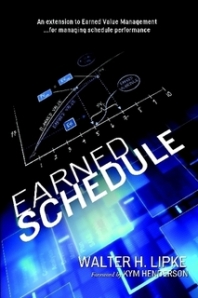In the March 2003 edition of the PMI College of Performance Management journal, The Measurable News Walt Lipke published his seminal paper “Schedule Is Different” and introduced the world to Earned Schedule (ES).
The challenge of predicting the likely completion date for a project is fraught with issues. There are no established protocols for scaling the remaining durations in a CPM schedule to take account of actual performance to date and there is no way of dealing with the consequences of a ‘bow wave’ of non-critical tasks consuming float until after they hit the critical path.
Re-scheduling the project is the same as re-estimating the work, a practice long discredited by Earned Value (EV) professional as being less accurate and more expensive than using EV formula to calculate a predicted cost outcome. And, the SPI and SV calculations cease to have any validity as the original project completion date is approached. In short, SPI does not work and CPM is wildly optimistic.
Walt solved this problem at least in part with the invention of ES. ES uses standard EV data to calculate a set of schedule indicators, which behave correctly over the entire period of project performance. The methodology and spreadsheets needed for calculation are freely available from the ES website.
Now Walt has published a sensibly priced book that explains the concept of ES and additional advances to the theory and practice of ES including the “P” factor, a measure of schedule adherence and “Effective EV,” which discounts the EV accrued by EV earned out of the correct process sequence.
I downloaded a PDF version of Walt’s book from Lulu Publishing for under $15; printed paperback books are available from Amazon, Lulu and a range of other book sellers.
Used properly, ES is the bridge between EVM cost and network schedule analysis, improving and providing the base for further developments in cost-schedule integration. ES can’t replace scheduling (and does not seek to) but it does provide a useful insight above and beyond what’s achievable using either traditional EV calculations or traditional CPM scheduling.
This is a book serious project control professionals cannot afford to ignore!



ES is a crucial and a logically interesting extension to the EVM method. See my article about “Earned Schedule for Dummies” in http://quantmleap.com/blog/?p=523